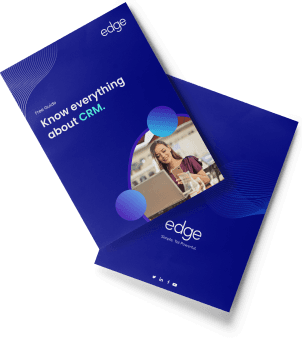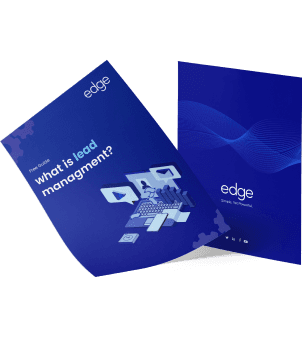Back in the days when we would binge over the television, switching channels in the cable, one would never miss those commercials starting with a deep baritone voice saying, “tired of your old car wash not giving you the shine you deserve, introducing a new car wash which gives you a finish like that of a new one”, music cues and you see a happy couple with two kids and a dog. These commercials always had one thing in common, they always showcased a problem first, which would make you feel familiar and then be so convincing that you’d order a few things just like that. Over the years, customers have become more aware and do not blindly follow these commercials. Although this doesn’t mean sales have lowered, the trend has evolved and people still are convinced to buy things, because we know that change is the only permanent thing a man can expect. The practice of introducing a problem first and then showcasing a product as a solution is called solution selling.
Let’s look closely and understand how this practice has been used and how it has evolved over the years.
What is a solution selling?
Solution selling is different from the traditional sales process, where sales representatives recognize the problems faced by the customers and provide a solution in the product they want to sell instead of just pushing the product conventionally. The sales process is designed in such a way that as there arises a need for the product instead of just smokes and mirrors.
Why do you need solution selling?
According to the HubSpot data, only 3 percent of people trust salespeople while closing the deal. Over time businesses have to continuously figure out ways to capture attention. Solution selling is a good practice when the business focuses on a bigger vision, as mellow as that sounds, that is the sole reason for a firm to use this method.
Solution selling is the best choice when the business focuses mainly on customized products or package deals. The salesperson in an ideal scenario would have to closely study the client’s needs, what kind of feature is needed or what more competition he needs to tackle.
This practice majorly works on the customer-oriented requirements rather than attending the sales number. This method does not create an urgency regarding a product, pushing it in the market with flashy advertisements and pop-ups rather just present it empathetically, create a common ground with the challenges faced and thus a prospect is made to see there lies a problem and the product or prospect is the solution. In this method, the emphasis on the “why” is higher than the “what” which allows the business to capture the client’s attention as a common ground is a foundation on which the sales process evolves.
To explain this, let’s take an example with a coffee machine in our office, here are two scenarios:
Scenario 1:
“Introducing a coffee machine, installed with various types of beverages you can choose from. This machine has a built-in filter, with a 2-year warranty, go get yours now!!!”
Scenario 2:
“Tired of your office coffee being bland all the time? Dispensers spilling and ruining your attire every day? Filters not well enough?
Does your coffee machine often malfunction and you miss out on your daily coffee? Introducing a brand new coffee machine for your office needs. With multiple beverages to choose from, a built-in coffee filter so no more fuss over filters. Buy now and get the coffee you deserve just a call away”
Now comparing the scenarios, the first one seems forced. As though the business just wants to sell and call it a day. The product is just pushed down and a client has to themselves find a common ground which in today’s age is rarely the case. With everything a call or click away, a client would want to feel connected and would expect a ready-made solution or something close to it.
The second scenario seems more inviting, the sales find common pain points people face with morning coffee, the idea or the core point seems same in both the scenarios, make a sale but the second one seems to make an effort which a client would feel needed and problems acknowledged as well. Now that we have a clear idea of why solution selling is required, let’s look closely at the process:
How solution selling works:
Solution selling isn’t a complex purpose and it doesn’t have strict rules but a flexible approach a firm can customize fitting their requirements. A general idea of its process is as follows:
· Capturing pain points
· Come up with questions
· Follow selling value
Capturing pain points:
This is very important for the solution selling practice. Figuring out challenges is a must as this will enable the salesperson to understand the issues a client’s faces and thus it becomes easier to establish a common ground. Without any understanding of the issues and challenges a client faces, it will become difficult for salespeople to close a deal especially when the client is forced to close a deal.
Knowing the challenges the clientele is facing makes them comfortable and thus won’t see a salesperson as an enemy, rather a person who’d help figure out the problems. To study the challenges and issues, the salesperson or the firm needs to openly communicate and ask more open-ended questions like “what issues you/your firm was facing before we came into the picture” or “what made you/your firm choose us, how were things managed before?” Through surveys, emails or direct communication, a salesperson needs to study the factors that helped the most closing the deal, as the key performance indicators would really help the firm where a team could approach and get things done without beating around the bush every time working on a deal.
Come up with questions:
Relying on communication with clients alone would help; there are chances where that data cannot be much provided for. Often the client wouldn’t have time to interact, at the time the team can rather come up with their own questions, by placing themselves in the client’s position. The team can hold brainstorming sessions and come up with scenarios and questions on their own, based on the data they record during every sale made. This will allow the salesperson to easily talk as well as explain the requirements of the product.
There might be many scenarios where the salesperson would be present with many questions and not being able to answer would not look good, instead, a little bit of preparation would not hurt anyone. This preparation would give a salesperson an added advantage and would save themselves a lot of embarrassment and come off as a confident and efficient business practice.
The questions need to be more focused on the buyer and their firm and not the product alone. Sales numbers need to take a backseat and the factors that helped buyers decide should be highly prioritized.
Follow selling value:
Solution selling mainly focuses on the bigger picture or in terms of business, return of investments and not on the product features and services. Whether it’s a huge firm or individual salesperson, it is
important for one to comprehend and present the product’s significance. Here are a few points that can be considered:
· Does the service/product save time and money? If so, by how much? Are these for the long run or returns are short-termed?
· How does the service/product eliminate issues and hurdles one goes through?
· Does the service increase credibility and influence other prospects as well?
A salesperson can look into some answers to these questions for the prospects.
Now let’s look into the actual process, which consists of the following:
· Prospect: consider the hurdles a buyer’s faces and study how the product/service solves it?
· Qualify: comprehend the decision-making unit (DMU)
· Detect: analyze the buyer’s needs.
· Add value: study the decision making process and access to the key decision-makers.
· Present: share the bigger picture, present how the investment would return in the future.
· Close: come to a conclusion benefitting both the parties. Let’s look into how a salesperson can present the right questions and prepare themselves with the right questions. There are a few goals to be
kept in mind as mentioned below:
Recognize the root cause:
What are the factors that lead a buyer to decide? What is the depth of the issues, the importance of the same?
Calculate the extent:
How are the issues and problems triggering the buyer or departments, or team to make the changes? Who will benefit from making this sale?
Get buy-in:
Weigh in the dynamics that spike interest in the buyers, what really excites the buyer to make a sale.
Challenges for solution sales in 2022:
Over time solution selling has noticed a few hurdles, here are a few listed:
· The business and firms now rely on their own selves and do not shy away from researching, thus avoiding the involvement of salespeople. Firms now define their own solutions and do their own research first hiring consultants and procurement teams with data and statistical figures.
· Convincing a buyer to make a sale is getting tougher as the market is now full of competition, now the sales are mostly possible when buyers are open for a new change, more of an impulse decision.
· Buyers now hate being coached about services, rather would wish to see the salesperson as a medium for communication for understanding and be a point of contact instead.
To these problems, a salesperson should be aware of as many scenarios as possible, along with establishing a good base for easy communication which will help the sales process in a better way.
Rather than rubbing the products or services on the buyer’s noses, it is advised to improve the ways of communication along with focusing on increasing the clientele, and making new friends as you go. This way a business would be able to understand various hurdles faced in the market. Studying market trends is important; this really helps a firm to stay in the market so as to come up with new innovations regularly.
Conclusion:
In summary, after all said and done, solution selling is a practice that can be used in the coming years as well irrespective of market trends. Solution selling is an easy process that visualizes the bigger picture, on the returns in the future than the short term profits or just for the sake of increasing sales. A salesperson should be fully aware of all types of scenarios and questions a client or firm can frame and always be on toes with upcoming challenges and trends in the market. Along with these, one needs to come up with many ways to communicate with their clients, understand the involvement of various departments and teams, the decision making units and what factors are considered while closing a deal. Understanding the pain points and the key performance indicators would help a salesperson deduce ways to close a deal faster and eliminate all the unwanted problems thus increasing the overall efficiency. With buyers now more aware of the problems and avoiding interference of salespeople, the firms need to come up with innovative ways to help see the importance of sales along with making them see as a point of contact, someone who’s on their side.
As Summer Sanders had once mentioned, “To be a champion, I think you have to see the big picture. It’s not about winning or losing; it’s about everyday hard work and about thriving on a challenge. It’s about embracing the pain that you’ll experience at the end of a race and not being afraid. I think people think too hard and get afraid of a certain challenge.”
With various trends in the market, solution selling is an evergreen practice that can very well evolve according to all kinds of businesses irrespective of the products or services a firm is trying to work with.













